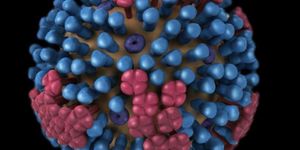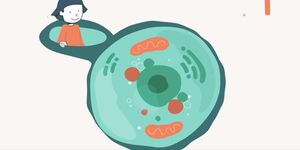The Power and Responsibility of Using CRISPR
What makes CRISPR so powerful is that it is easy for any molecular or genetic scientist to use, and it works on almost every cell in every organism. CRISPR gene editing technology was developed from a prokaryotic immune system, to make gene-editing faster and more precise. Since its first application in 2011, CRISPR has hastened the gene-editing process and drastically increased scientific advances to include altering human embryonic cells. The time has come for the public and scientists to implement laws regarding how CRISPR is used.
Editing embryonic, sperm, or egg cells is different than other gene therapy because the edits are passed down to offspring. In other words, the new gene is among the human population the same way the gene for brown eyes or blonde hair is. He Jiankui is the first, and the only scientist to edit human embryonic cells, in an experiment done in November of 2018. In this case, the allele He made already occurs in the human population, but it's not difficult to imagine introducing unique alleles.
He and his use of CRISPR are the exception to the norm. Previous applications of CRISPR are considered ethical by the vast majority of scientists. In the United States, the technology has been used to make crops grow in harsh conditions brought on by climate change like drought and heat. Pharma companies have used it to fast track drug development for chronic diseases like cystic fibrosis, and gene therapy for cancer. Even energy companies like ExxonMobil have invested in CRISPR to improve renewable biofuels. Though CRISPR has the potential to do a lot of good, trust in responsibly applying it crashed when He announced that he edited the embryonic cells of twin baby girls born in November 2018. The experiment was carried out without his employer, Southern University of Science and Technology, being aware, and almost everyone in the science community including the university and the Chinese government immediately condemned the work.
Now, the scientific community cannot assume the trust of scientists researching CRISPR around the world. Moreover, the unchecked power of CRISPR technology blindsided the general public. Scientists are now forced to reconcile with the ethics, life-changing benefits, and long-term consequences to the human genome and population. Scientists broadly concur CRISPR should not be used to edit germline cells until it receives strong public support, and the long-term implications are well understood.
In March, prominent CRISPR researchers held a moratorium to regulate CRISPR editing in human embryonic, sperm, and egg cells. They agreed on a five-year ban to allow more time to discuss proper guidelines of use, but ultimately, the moratorium is a non-binding statement of best practices. Very few scientists believe that CRISPR editing should be used in human germline cells without any regulation. One of these scientists, Bryan Bishop, is independently researching the use of CRISPR on germline cells to improve humans. Bishop says his enterprise is still working with animal models but aims to design humans that are muscular without weightlifting, among other health and aesthetic goals. The transgenic belief is that technology can improve the human species, and Bishop thinks there is nothing unethical about his intentions or process. Bishop's research is privately funded, so a government block of funding to CRISPR research would not stop his business.
Even among the majority of scientists who believe CRISPR needs to be regulated, a spectrum of recommendations has been proposed. Jennifer Doudna, one of the original developers of CRISPR gene editing technology, did not support the March moratorium for fear that it would block research for life-saving gene therapy. Emmanuelle Charpentier, the microbiologist who worked with Doudna to develop CRISPR, outlined the moratorium statement. China's solution is to require scientists to request approval from the Chinese government before using CRISPR for any research.
CRISPR technology is available and intuitive for scientists with basic molecular biology training. Currently, there are no limits on its application to humans, and long-term effects are still a mystery. It is imperative that scientists and the general public wrestle with the ethics, benefits, and consequences of editing germlines because innovation will take advantage of lawlessness.
Sources: Wired, MIT Technology Review, The Gaurdian, Center for Genetics and Society








